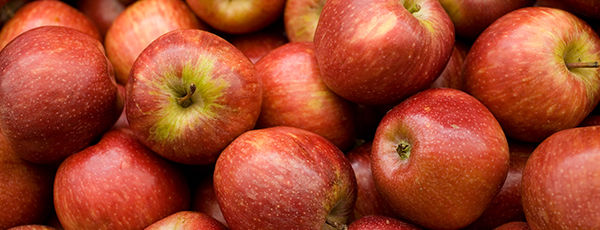Managing Powdery Mildew to Prevent Yield and Quality Losses
October 7, 2019

A healthy apple harvest each growing season depends on a variety of factors, not least of which is an effective program to combat fungal diseases, such as powdery mildew. While powdery mildew thrives in high humidity, it survives arid periods too and waits to colonize and produce spores once environmental conditions are more favorable. Present in all crop-producing regions in the world, powdery mildew is one of the most common diseases affecting a wide variety of crops.
In apples, powdery mildew, caused by the fungus Podosphaera leucotricha, attacks not just the fruit but also the leaves, twigs, and blossoms, making it a significant threat to overall tree health.1 Infected blossoms won’t produce fruit, and infected buds spread the disease to the next year’s blossoms and leaves, making longterm proactive management essential.1
If left untreated, powdery mildew can be a devastating disease not only in the field but also on the wallet, because of its effect on overall apple quality. Harold Schell works as the Horticultural Manager of Chelan Fruit Company, a cooperative of more than 300 growers, and understands the importance of attacking this highpriority disease in the orchard.
“If you have a young orchard and you’re growing young trees, it can literally stop the growth,” Schell said. “If it’s a producing block, it can adversely affect the fruit and create damage that, come harvest time, is bad enough to make it a cull.”
In young, small orchards that are particularly susceptible to powdery mildew damage, pruning infected flower and shoot buds during winter and early spring can provide some protection.2 Chelan Fruit Company, however, consists of more than 12,000 acres of tree fruit and produces roughly 350,000 bins of apples, making pruning practices nearly impossible.
Foliar applications of fungicides throughout the season provide the best protection against powdery mildew and can be combined with existing spray rotations to treat other apple issues, including botrytis and rots.
According to Schell, most growers begin their sprays early in the spring, rotating chemistries through the course of the worst of the mildew period, which is early spring to early summer.
“Once the heat in the summer crops up, then if we’ve done our job earlier, mildew is less of a problem,” Schell said.
One solution that some of the Chelan Fruit Company’s growers have used to combat this prevalent concern is Luna Sensation® fungicide from Crop Science. Foliar fungicide programs that include Luna Sensation have been broadly tested by university researchers and crop advisors in the field since 2008. For example, research trials conducted by Oregon State University have shown that the use of Luna Sensation as part of an integrated powdery mildew program along with DMIs and protectants results in a reduction in the damages inflicted by powdery mildew.3
Treatment |
Leaves showing powdery mildew (%) |
Untreated Control |
51.3% |
Luna Sensation® @ 5 fl. oz.alternated with DMI plus protectant |
7.1% |
Chuck Cary, a Crop Science Pacific Northwest sales representative, also recommends Luna Sensation fungicide to growers in his region because of its unsurpassed efficacy in fighting powdery mildew and storage diseases.
According to Cary, early-season and late-season applications of fungicides are necessary to protect the crop from many of the postharvest spots and rots. “Luna Sensation offers control of powdery mildew at an early petal fall timing which is also an ideal timing for many of the storage rot diseases like botrytis. A grower will also find a second application close to harvest is an excellent timing for this fungicide to reduce overwintering powdery mildew for next season and will be a good timing to improve fruit quality going to market or storage,” Cary said.
“One of the things that Luna Sensation offers over some of the other products is that it has two unique active ingredients,” Cary said. “From a performance and resistance management standpoint, these particular active ingredients cross over, giving us control of powdery mildew, scab, and botrytis.” Both actives work on stopping the energy of the pathogens but from opposite sites in the fungus. Due to this multiple-site activity, there is excellent reach back control of disease that might be started. “Although these actives work in a similar way and on similar pathogens, their physical characteristics complement each other, as one is very mobile in the xylem (systemic fungicide) and the other offers outstanding redistribution on the leaf surface,” Cary added.
Schell recommends Luna Sensation to his growers for this same two-fold effect. “It’s not just a good mildewcide, but it’s also good for controlling these storage rots,” he said. “In my life, working with a shipper and a packer, that’s important because without quality fruit there is no market.”
Learn more about powdery mildew and solutions offered by Crop Science.
Sources:
1 http://ohioline.osu.edu/hyg-fact/3000/pdf/HYG_3001_08.pdf
2 https://www.apsnet.org/edcenter/intropp/lessons/fungi/ascomycetes/Pages/ApplePowderyMildew.aspx
3 http://www.science.oregonstate.edu/bpp/Plant_Clinic/Fungicidebooklet/2013/APPLE.pdf